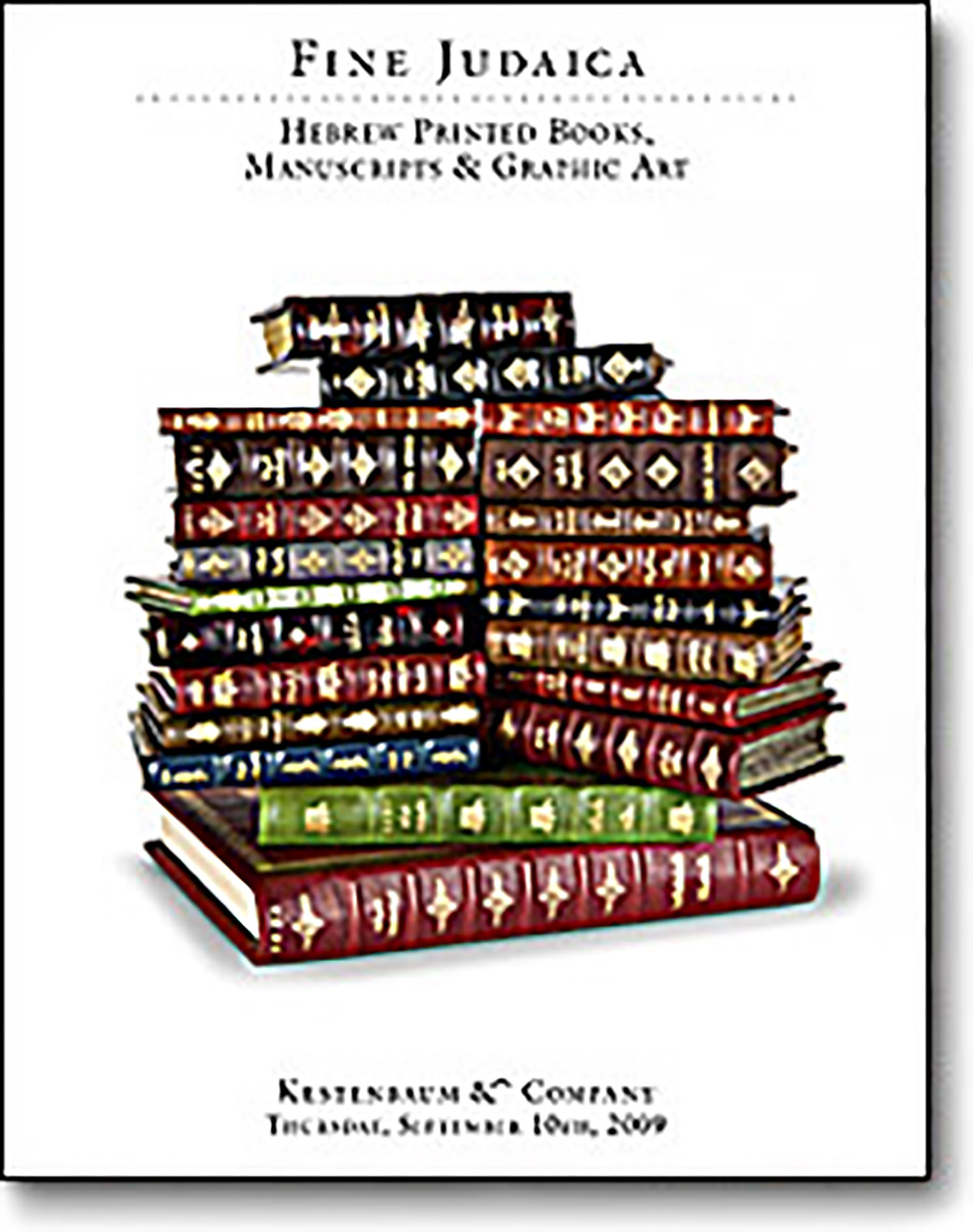Seder Olam Rabah VeZuta U'Megilath Ta’anith [“The Order of the World, Major and Minor” and the “Scroll of Fasts”: three early historical narratives]. With commentary by Jacob Emden.

AUCTION 46 |
Thursday, September 10th,
2009 at 1:00
Fine Judaica: Hebrew Printed Books, Manuscripts, & Graphic Art
Lot 105
(EMDEN, JACOB).
Seder Olam Rabah VeZuta U'Megilath Ta’anith [“The Order of the World, Major and Minor” and the “Scroll of Fasts”: three early historical narratives]. With commentary by Jacob Emden.
Hamburg: Christian Simon Schröder (1757)
Est: $4,000 - $5,000
The Talmud ascribes composition of Megilath Ta’anith to the School of Chananiah ben Chizkiyah. This “Scroll” was the first portion of the Oral Law to be committed to writing (see Rashi, Tractate Shabbath 13b). The text consists of a list of commemorative dates in the course of the year when fasting is forbidden. A critical edition was published by H. Lichtenstein, “Die Fastenrolle,” HUCA, Vols. VIII-IX (1931-32), pp. 257-351. See EJ, Vol. XI, cols. 1230-1.
Seder Olam Rabah is traditionally attributed to the second-century Tanna R. Yosé ben Chalafta. The anonymous Seder Olam Zuta is a much later work. Emden speculates that it was composed at the end of the Savoraic period with later additions. Recent scholarly opinion wavers between the sixth and seventh centuries. See EJ, Vol. XIV, cols. 1091-3.
Emden appended to these historical texts a halachic discussion of the Birkath HaChamah (Blessing of the Sun), recited once in twenty-eight years, as well as affidavits related to his bete-noire, Sabbatianism (the lingering belief in the messiah-hood of Shabbetai Tzevi). These include eyewitess testimony given in Satanow, concerning sexual improprieties by the daughter of the notorious Elisha of Rohytin.
On f.24r. the hand-written note discusses the correct reading of Megilath Ta'anith, chap. II ("Bnei Chakra" versus "B'nei Mikra"). The anonymous glossator refutes Emden's claim that Mount Zion is referred to as "Akra." He writes: "I myself am from Jerusalem and this is patently false! " (Ana ze'ira me-anshei yerushalayim ve-lahada"m.) It has been suggested that this historical note might have been penned by the Chid"a (Chaim Joseph David Azulai)
